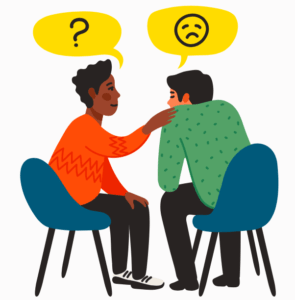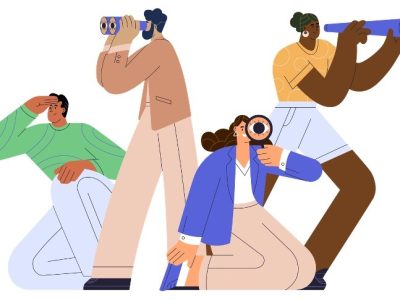
Is Empathy Always a Good Thing?

Hello All!
I know from talking to friends and colleagues that many of us are working within our organizations to address widespread burnout while also experiencing it ourselves. This is, in some ways, the predictable result of an already-strapped workforce working through an 18-month public health crisis. It is also likely in part due to the empathic distress we feel for those we are serving.
Perhaps surprisingly, empathy can actually contribute to burnout. Many of us may have felt at one time that we have too much empathy or that it is too painful to “feel” for so many people so much of the time. I know I have felt this! Many of us who are in the helping professions were drawn to the field precisely because we feel so deeply for others and desire to alleviate their suffering.
How can we be deeply empathic and not drained?
Empathy is complex. Understanding more about it, including both the upsides and downsides can be helpful. When we are aware of the different types of empathy and when we are experiencing them, we can make more intentional decisions about how to manage it. This helps us be more effective with others while also taking care of ourselves.
We can think of empathy in two buckets: affective (or emotional) empathy, and cognitive (or perspective-taking) empathy.

Affective empathy is when we actually feel the same thing others are feeling. If our client feels hopeless and sad, we too feel sad and hopeless. When our child’s feelings have been hurt by a friend, we too feel hurt when they tell us about it.
Helpful aspects of affective empathy: When we feel the distress of another, this can spur us to action; if we feel pain when others are in pain, we may be more apt to try and comfort or take action to protect them. Imagine the urgency to rescue a harmed animal or protest family separation policies after seeing crying children and mothers.
Likewise, when we feel the positive emotions that others feel, such as elation or happiness, this can also create a deep connection. Imagine the collective euphoria at exciting sporting events or the love felt when you are joyful with a family member over their good news.
Downsides of affective empathy: When we feel distress, sadness and other painful emotions that others are feeling, it activates the pain centers in our brain. It can be heavy and draining. For helping professionals, it can lead to burnout as we get overwhelmed or experience numbness (“empathy fatigue”) as we try to distance ourselves from the feelings. Affective empathy can also contribute to discrimination, as we tend to ‘feel’ most for others in our affinity group.
Interestingly, there is good research that affective empathy is also often not perceived as truly caring by others. Imagine a friend sharing with us that they are upset and we become equally upset. When this happens, we don’t feel like a “safe harbor” that they can talk to; we may stop listening attentively, dive in to give advice, try to “fix” their problems or dismiss them, to lower the pain we are feeling.
Cognitive empathy (or perspective taking) is when we imagine what others feel; we take their perspective; we try to understand what they are feeling or going through. This type of empathy is characterized by curiosity and imagination and is often driven by a value of non-judgment.
Helpful aspects of cognitive empathy: It is unlimited! We can try and understand anyone in any situation. We can imagine how people are very different form us and how they might do, say or believe things that are totally different from our own experiences.
This type of empathy actually lights up reward centers in our brains- it makes us feel closer to people, more connected. Helping professionals is related to job satisfaction and is a protective factor against burnout.
Downsides to cognitive empathy: Sometimes imagining why or how someone might do or think something, keeps us from being able to draw boundaries, set limits, leave relationships or otherwise say “no” to them. Imagine always “understanding” where someone’s abusive behavior comes from. This can definitely keep us from limit-setting if we can always find a way to rationalize or dismiss their behavior.
I created a graphic that shows evidenced-based (and practice-based) strategies to move in and out of these types of empathy, intentionally. You can find it under “empathy and stigma”. I would love to hear what you all think of these concepts!
As we are cautiously seeing each other a bit more, wishing you all many smiles and bear hugs 😉

https://www.emorrisonconsulting.com/
P.S. For all of you on this list who are Motivational Interviewing Facilitators or for anyone who does any type of training: there is a new resource for ensuring we are facilitating Trauma-Informed Workshops (Zoom and In-person) that I hope might be useful to you all. You can find it under Motivational Interviewing Facilitators.
P.P.S For anyone who would like to see any research referenced here, please see the MI and Empathy bibliographies or just email me!



